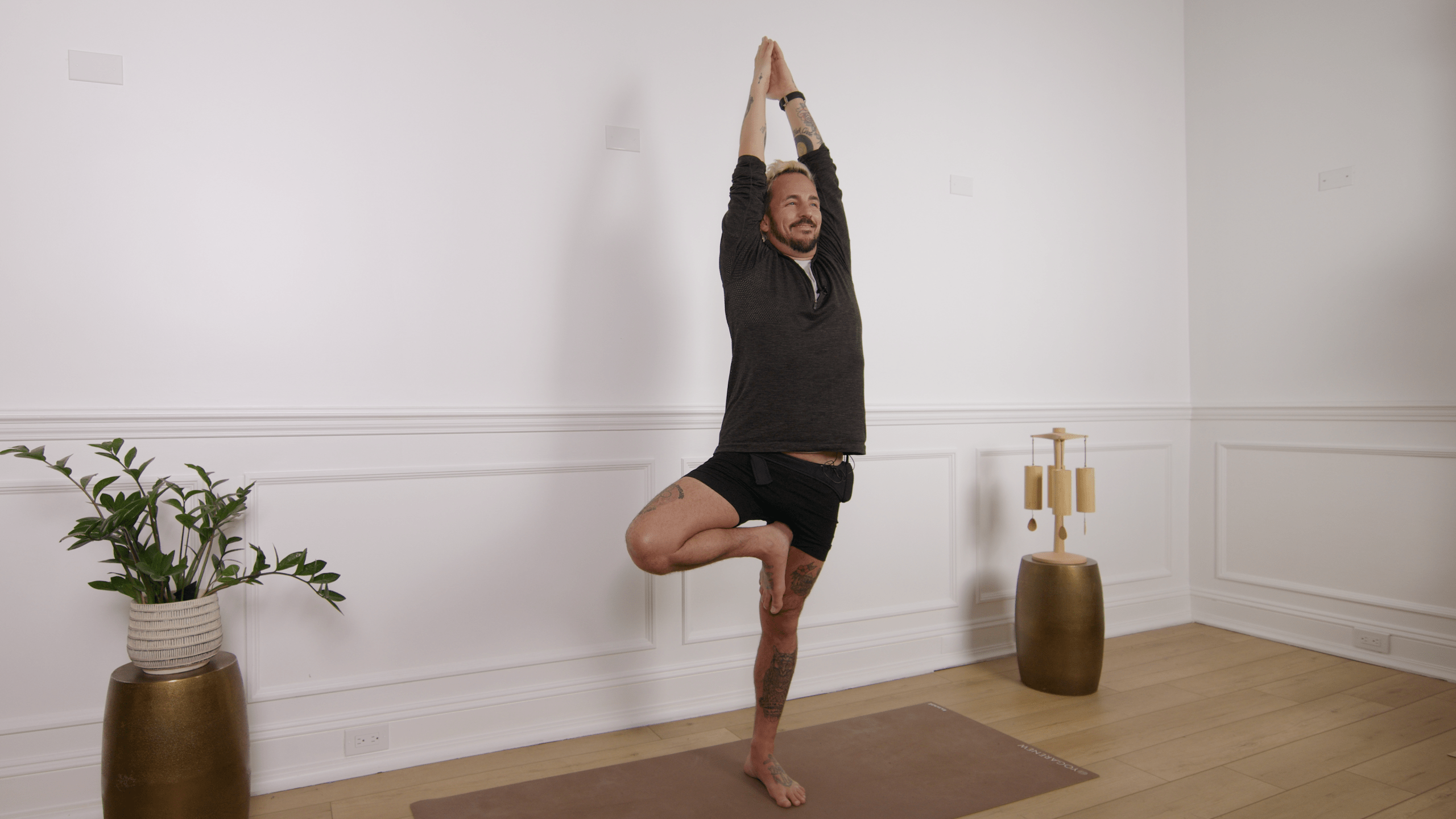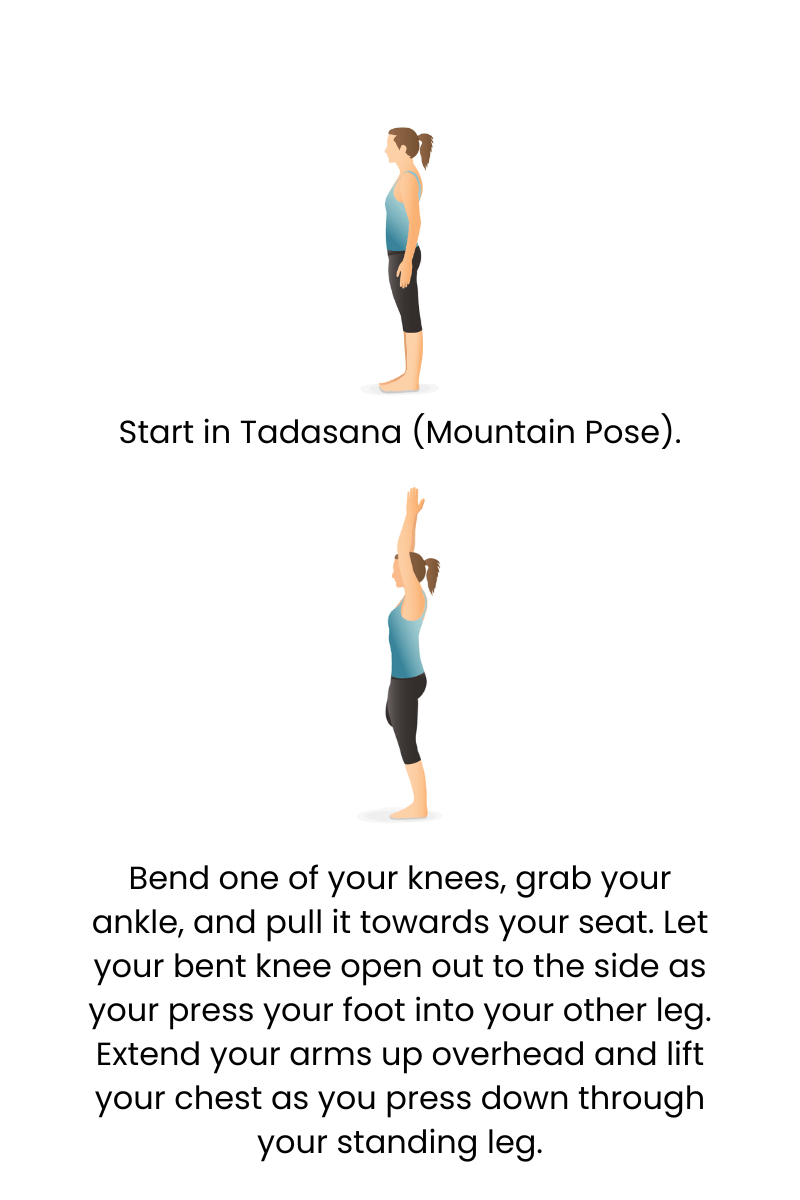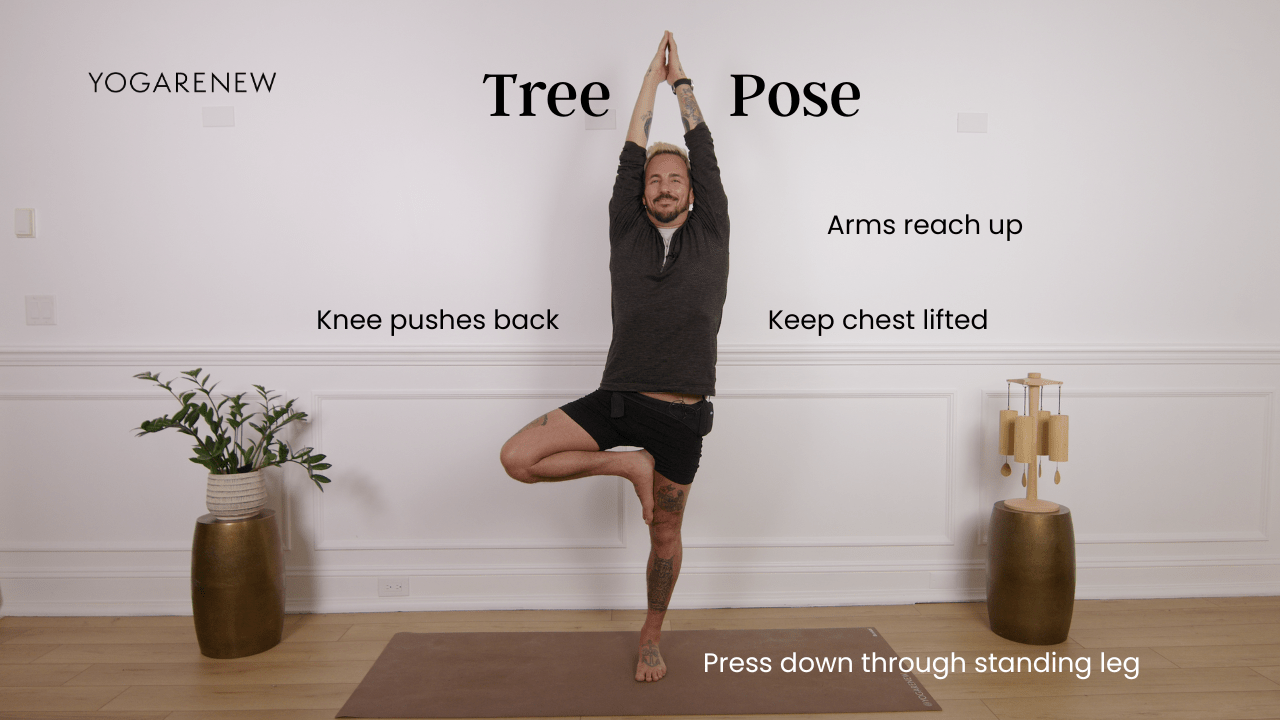What is Tree Pose?
English Name: Tree Pose
Sanskrit Name: Vrksasana (pronounced vrik-SHAH-suh-nuh)
Category: Standing, Balance, Beginner-Friendly, Foundational

English Name: Tree Pose
Sanskrit Name: Vrksasana (pronounced vrik-SHAH-suh-nuh)
Category: Standing, Balance, Beginner-Friendly, Foundational
Tree Pose, or Vrksasana, is a classic one-legged balancing posture that encourages both strength and stillness. Rooted through one foot with the opposite foot placed on the inner leg, the body stands tall like a tree—stable, open, and grounded.
Practiced in nearly every style of yoga, Tree Pose improves balance, strengthens the lower body, and cultivates mental clarity and poise.
Begin in Mountain Pose (Tadasana), standing tall with feet together.
Shift your weight onto your left foot, grounding down evenly through all four corners.
Bring your right foot to the inner left ankle, calf, or thigh—avoid the knee.
Press foot and leg into each other equally for stability.
Bring your hands to prayer at the heart or extend arms overhead like branches.
Soften the gaze (drishti) on a still point in front of you.
Hold for 5–10 breaths, then gently release and switch sides.


Vrksasana is a symbolic and physical practice of rooting down to rise up. It calls on strength and softness—requiring engagement in the body and ease in the breath. While the shape is simple, the challenge lies in staying present and steady.
As a standing balance, Tree Pose improves coordination, posture, and self-confidence. Whether you sway or stand still, each attempt at Tree teaches resilience, focus, and the beauty of returning to center.
Anywhere but the knee—ankle, calf, or inner thigh are all safe options.
Try gazing at a still point and engaging your core and standing leg. It’s a practice!
Yes! It’s a foundational pose that’s accessible and adaptable.
Absolutely. It’s a great option for focus and grounding.
Yes—Tree Pose is great for improving posture, balance, and calm any time of day.

Explore classes & pose tutorials for any style, format, duration or experience level with a free account in the YogaRenew app. Or subscribe and gain access to workshops, live classes and more.